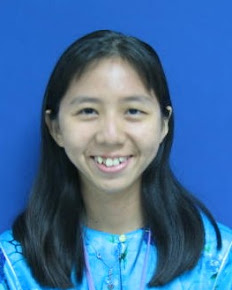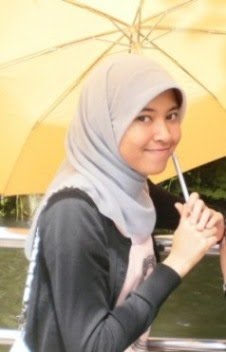BAJAU
Bajau community is indigenous people of Sabah and the second largest after Kadazan. Tere are various ethnic groups in society such as Ilanun, Bajau, Sulu and others. Most of them live in Samporna and Kota belud. In terms of history, men in Bajau Community is known as a skilled equestrian.
Merisik: The culture is not much different from the traditional Malay society. Before the marriage took place, the man-side family merisik girls who become candidates. How similar manner practiced by other ethnic community to appoint representatives for the family to meet girls. After geting assurance that the girl is single or not and suitable with man-side family the followed by ritual 'seruan'. 'seruan' is kind of engagement.
Propose: Propose ceremony calle ‘seruan’. In the event, the men take the ring, clothes and cash of RM100.00 for engagement.Time engagement usually for one year to allow the men to make preparations. When the specified time arrived, the man will sent all the goods that promised when ‘propose ceremony. In the that event, date of marriage is determined. The female-side family determines the number of buffaloes will be presented to a wedding. Seven buffaloes for rich family, three for intermediate family and one for poor family. Dowry and other gifts such as cloths, sirih pinang, make-up etc. will be given later in the marriage ceremony.
Marriage Ceremony: Day before the marriage, the future groom and women will make-up by several people called ‘mak andam’. Dandanan include bath powder with powder ingredients rice flour mixed flowers at night. At weddings, bridal dress decorated with a new, usually yellow and green made from silk. Hair bride adorned with 'serempak'. Serempak is a crown. The groom wore a yellow complete with tanjak and armed with kris.
Tandu carried by several members of his family or riding a horse.Marriage sometimes held for several days. Rich family will held seven days of marriage ceremony, medium family will held three days of marriage ceremony and one days for poor family day for. Throughout the day, at night is the peak of the event that played musical instruments such as kulintangan, gongs, bebandil and dendang. The band consists of six players led by a woman who plays kulintangan, two beater drum, two players and a gong player bebandil. Dance requires between six and eight dancers including two women.
Some das of fire released as a sign of respect and welcome to the groom group.arrival to the of the entourage groom bride home page. The groom is down from his horse or tandu to see bride into the house. The groom will seat and gong sounds stopped. Then, groom waiting for akad nikah. After arrival time, groom and ablution akad nikah ceremony held. The guest then will give wishes the couple by 'tepung tawar' ceremony. The groom and the bride into the room to air prayer ceremony cancel. The groom and the delegation to go through a few scenes that made barrier layer into the room before the bride. Each curtain will be opened only when paid about RM1O to RM2O or read a poem, poetry, and four nasyid is sing. After the groom cancel prayers with water touched her forehead,the they will ‘Bersanding’. Then both the bride out to meet and shaking hands with guests.
the groom group on the way go to bride home

dancing to entertain the bridal couple

the bridal couple enjoy 'silat'

'bersanding' on bridal dais

'tepung tawar' ceremony
the couple dance together with families
MURUT
bride-groom wearing traditional Murut dress
The Murut are indigenous ethnic group inhabiting northern inland regions of Borneo. A large percentage of the Murut communities are in the southwest interior of Sabah, east Malaysia, specifically the districts of Keningau, Tenom and Nabawan Pensiangan, along the Sapulut and Padas Rivers. The literal translation of murut is "hill people".The essence of Murut tradition of feasts is distinctive. No merrymaking will end at least until sunrise and can last up to seven days later. This is especially the case with weddings or funerals. Through modernization, no more heads must be furnished for weddings but jars along with cloth, beads, gold and ivory bracelets have taken its place. All these dowry items will be proudly displayed at the ceremony. Jars or “sampa” holds a prominent status in their customs. The Murut know the age of sampa and treat them will due respect. Jars are also a place of spirits. Beads play an integral role in Murut life. Wedding beads must be presented in the form of belts, necklaces, headgear and decoration.
The wedding ceremony must be held in the bride’s longhouse, tapai or rice wine must be served and all the meat has to be pickled.Weddings usually be carried out with the lively and full customs. Usual wedding ceremony held for five days. The three day first is held in the bride's home and the rest held in groom’s house. The bride will wear Murut traditional wedding dress and beautiful crown on that day. A group of girls known as tambuloi responsible for adorn the bride. The bride sit in a special room which cover by several pieces of expensive cloth. Next, parents groom will enter to take their daughter out. But before that, they must pay the price of cloth that cover the door of the room with the values that have been made with the bride's parents first.
Then the bride carried out and brought to groom house. If cloudy weather, departure to home groom should be suspended until the weather is fine. They believe, bridal affected water on marriage will easily get disease. If death occurs suddenly in the village on marriage, the departure had to be postponed until tomorrow. If continued also, they believe one of the pair would be dead. If via the river, the bride must be lifted. If exposed to water, believed to be the couple's eldest child will die.
When the couple arrived at the house, the bride is placed in a special room. He will be accompanied by some girls from the groom-side family. Once you know the arrival of the bride, relatives and friends of the men will bring a variety of fruit to bridal couples. In the evening, both the bride is required to eat together. When to sleep, the husband must humor his wife jokes and give gifts.
Kadazan wedding always started with the parents of a young man visiting the family of a prospective bride. The father of the young man would open the talks along these lines: “I have a strong and good son who needs a wife, and I see that you have nice daughters. I would like you to marry one of your daughters to my son.” The parents of the girl were then left to consider. They might visit the family proposing to get a better picture of their future son-in-law, and, more importantly, they would see if the family was able to come up with the required nopung, the dowry When family of the daughter shows that they are agreeable to a union, the parents of the young man pay them a second visit and the engagement is arranged. Both parties agree to the bride price, which customarily consists of 15 buffaloes, 10 ancient brass canons, 3 large, Chinese jars and one brass gong. The parents of the future bride will first ask for a higher price, and bargaining is expected.
When both parties agree on the nopung, they need to agree on the ‘terms of payment’, and it can be agreed that the dowry is paid in instalments over a certain period of time, or that some of the items are substituted with money. And while jars, buffaloes and canons can be substituted with money, at least two buffaloes must not be converted into cash money. In marriages, dowries are paid to the bride's family and an elaborate negotiation is arranged between the groom and bride's families. As a traditional gesture of politeness and civility, the dowry is metaphorically laid out with match sticks on a flat surface, with a representative from each side pushing and pulling the sticks across a boundary to denote the bargaining of the dowry. Dowries traditionally consisted of water buffaloes, pigs, sacks of rice and even urns of tapai. Modern dowry negotiations also include cash and land ownership deeds.

buffaloes for dowry

an array of traditional dowry requirements
The wedding couple is seated in the centre of the house, the bride to the left of the groom, and again rice will be served. This time, the rice must be served from a or a wok, in order that there will be always enough rice for the couple to eat. Bride and groom are given a ball of rice each, which they have to feed each other. The ball of rice symbolises that the two young people are of different blood, which is now to be unified. Only after this symbolic unification can the congregation be served from the communal wok. Bride and groom are given a chicken drumstick, as the groom cannot eat from the buffaloes slaughtered for the feast. Moreover, if he should eat from the buffaloes, the couple might not be able to have children.
The next day, the young husband takes his bride to his parents home, where they will stay until the young man has built his own house for him and his wife. Traditionally three months after the wedding the young man visits his parents-in-law, bringing with him a pig. It will be slaughtered ceremonially and eaten by the whole family, signifying that they are from now on blood-relatives.

the couple on wedding day















1 comments:
Do you need a sub editor to edit your blog? I am an experienced sub editor who can help clean your text for a fee.
Post a Comment